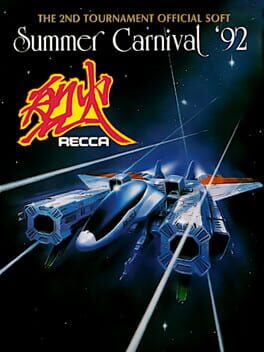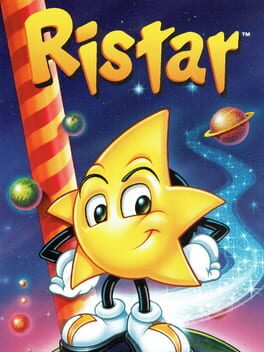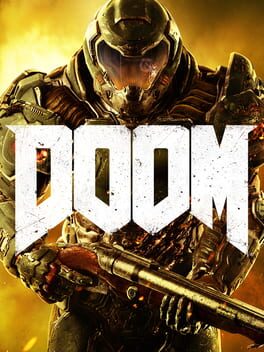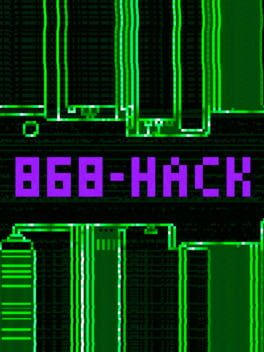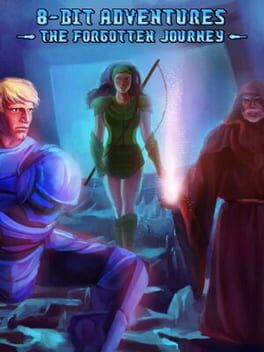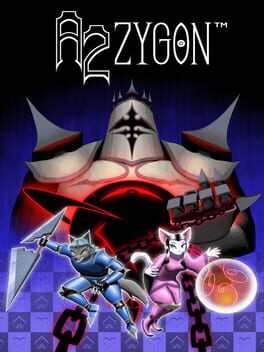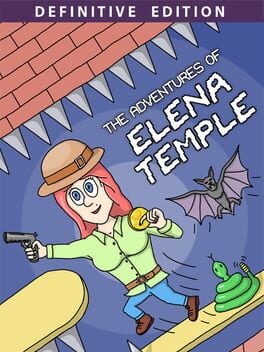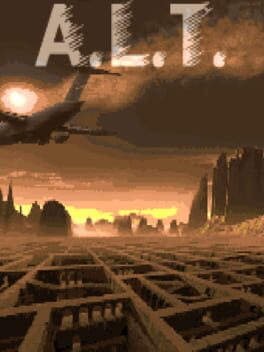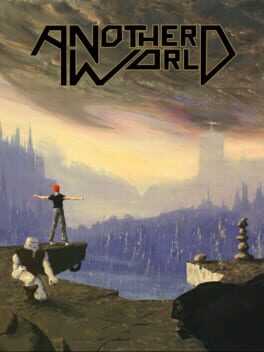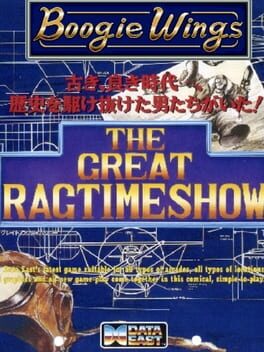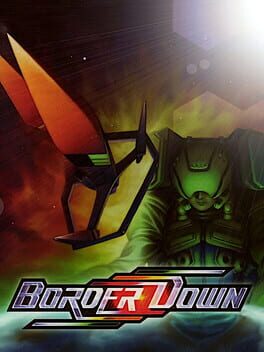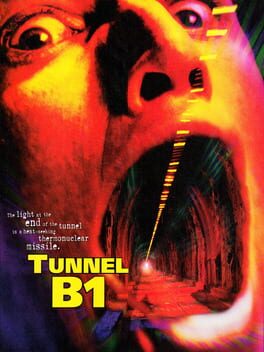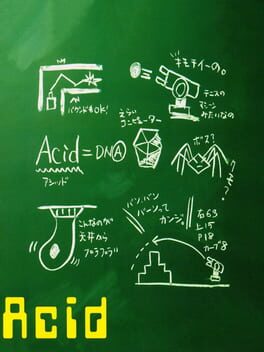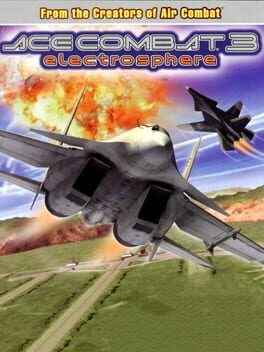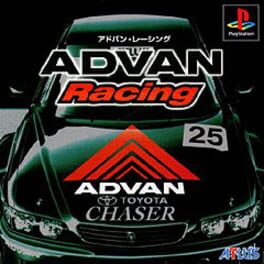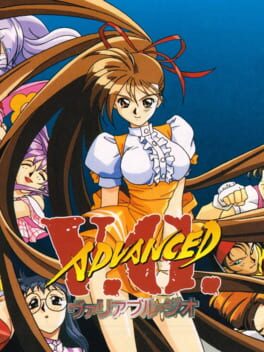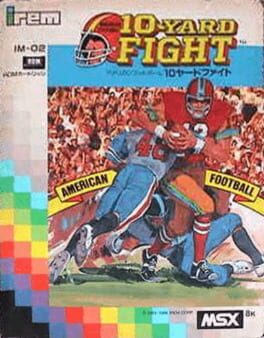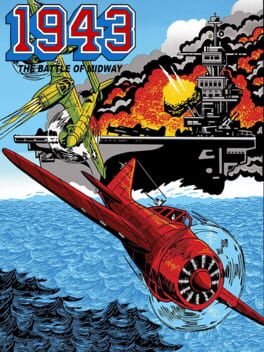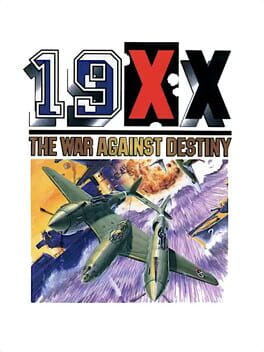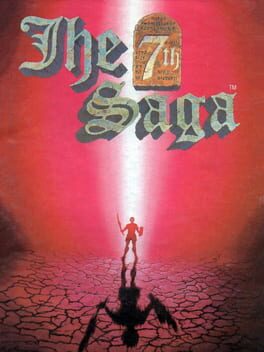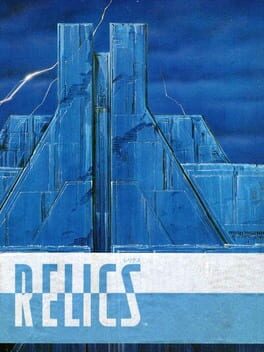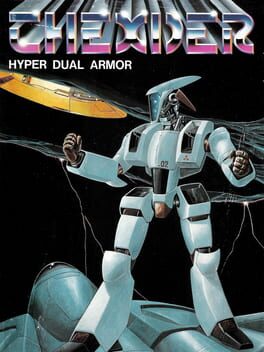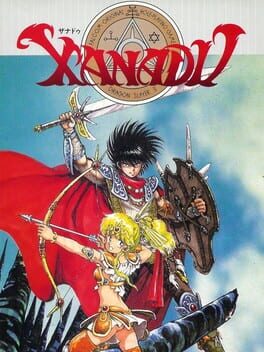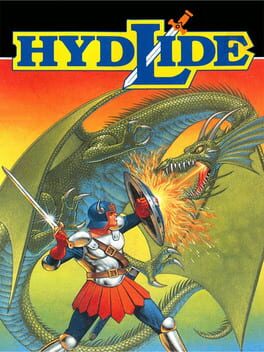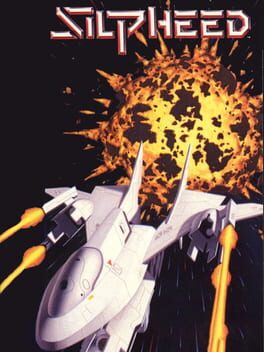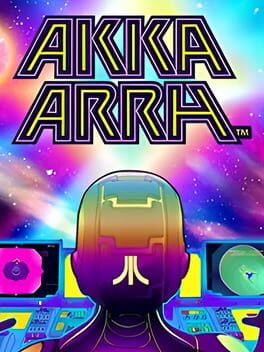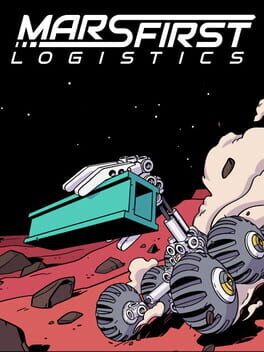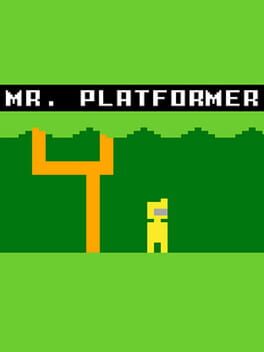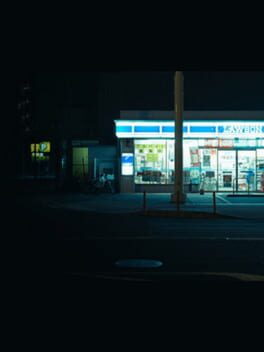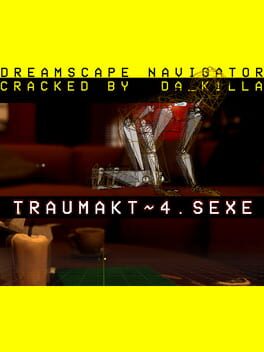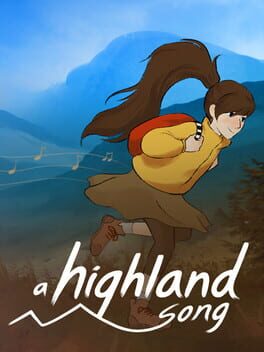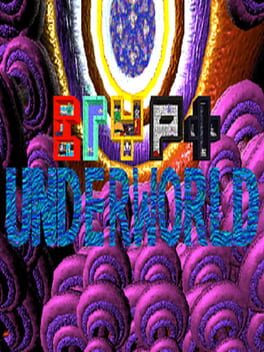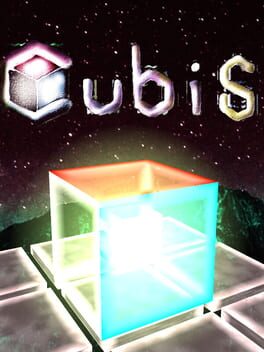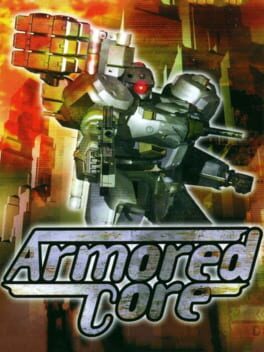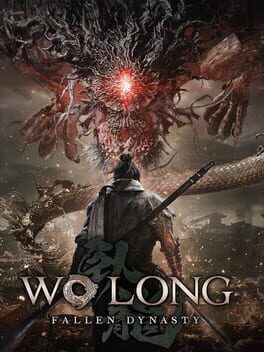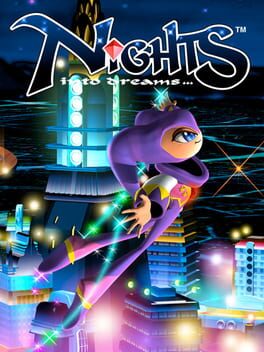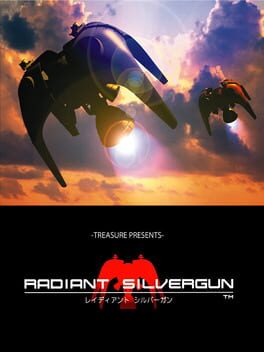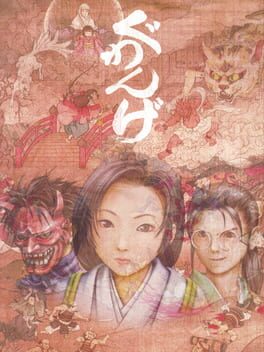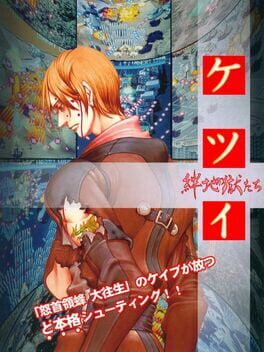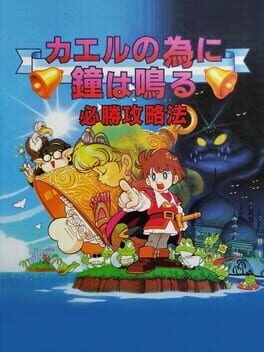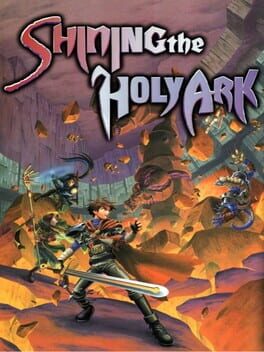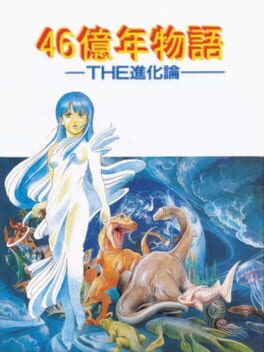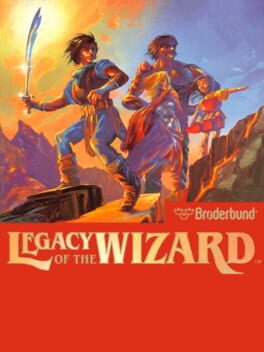LoopedOST
377 reviews liked by LoopedOST
God Hand
2006
i've been thinking about my relationship with art, and my thoughts at the moment are that what i want in a piece is to feel something. it's not only about being entertaining, it's about catharsis. it's about feeling extremely happy or deeply miserable. it's about having the teeth grinding, the foot tapping, the head scratched. it's about going insane over the details. i want to feel alive. maybe it's a sick thought. maybe i should just live my own life, but i can guarantee, i've been living my own life a lot! much more than i would like to, sometimes.
all the games i've finished this year so far (very few) were a good time, some of them were amazing, really thought-provoking like anodyne 2, but none of them hit me like a truck. until GOD HAND.
GOD HAND makes you feel extremely happy, deeply miserable, with your teeth grinding, your foot tapping, your head scratching... pretty much at the same time! it's commonly known as a very difficult game and it's not an impossible one, but it does require you full commitment. starting with learning the controls: when action games were about swords and guns, with fast-paced movement, GOD HAND was about throwing punches while moving in tank controls. it's all about positioning, a 1v1 it's already a difficult task, but a 2v1? a 4v1? does not help when your crowd control movements are slow as hell! but don't be confused: GOD HAND is not a slow game! actually, if you can't keep up, you will pretty much ended up cooked lol, you have to adapt to the rhythm of the fight. it's all about learning and once you learn, it's about going wild.
and it's not a flashy game. you throw punches. real punches. punches that hit, than you can feel when it hits. GOD HAND it's a dudes rock game but every single dude is rocking on you (in a not-homosexual-way (unfortunately)), and you got rock on them instead. GOD HAND it's a videogame that loves action games. it's a videogame that recognizes the masculine archetypes about the action genre in overall media and at the same time it honors it and it also makes fun of it. GOD HAND is very "manly"! i mean, having blackjack and poker and dogs races as a way to make money makes me think that shinji mikami and the team are either the funniest guys ever or the most heteronormative of all time! and it's very funny either way.
what really matters is that GOD HAND is a videogame that made me feel everything, and in a year that is definitely NOT being my year, with a lot of work and study and personal problems as well, making me sometimes lost my interest in my favorite hobby, it reminds me how great videogames can be and how i can always just punch a son of a bitch when it needs to. you better watch out mf!!!
all the games i've finished this year so far (very few) were a good time, some of them were amazing, really thought-provoking like anodyne 2, but none of them hit me like a truck. until GOD HAND.
GOD HAND makes you feel extremely happy, deeply miserable, with your teeth grinding, your foot tapping, your head scratching... pretty much at the same time! it's commonly known as a very difficult game and it's not an impossible one, but it does require you full commitment. starting with learning the controls: when action games were about swords and guns, with fast-paced movement, GOD HAND was about throwing punches while moving in tank controls. it's all about positioning, a 1v1 it's already a difficult task, but a 2v1? a 4v1? does not help when your crowd control movements are slow as hell! but don't be confused: GOD HAND is not a slow game! actually, if you can't keep up, you will pretty much ended up cooked lol, you have to adapt to the rhythm of the fight. it's all about learning and once you learn, it's about going wild.
and it's not a flashy game. you throw punches. real punches. punches that hit, than you can feel when it hits. GOD HAND it's a dudes rock game but every single dude is rocking on you (in a not-homosexual-way (unfortunately)), and you got rock on them instead. GOD HAND it's a videogame that loves action games. it's a videogame that recognizes the masculine archetypes about the action genre in overall media and at the same time it honors it and it also makes fun of it. GOD HAND is very "manly"! i mean, having blackjack and poker and dogs races as a way to make money makes me think that shinji mikami and the team are either the funniest guys ever or the most heteronormative of all time! and it's very funny either way.
what really matters is that GOD HAND is a videogame that made me feel everything, and in a year that is definitely NOT being my year, with a lot of work and study and personal problems as well, making me sometimes lost my interest in my favorite hobby, it reminds me how great videogames can be and how i can always just punch a son of a bitch when it needs to. you better watch out mf!!!
are you using your time to properly think and talk with art? are you listening? or do you plug your ears anytime it tries to talk with you, to challenge you and make you rethink what you're engaging with?
i don't think i have any common ground with most people who like videogames, actually. but i don't think this is just videogames anymore, this is endemic in all of the arts. people stopped being listeners, started being consumers. no long a plot twist will make your heart skip a beat, now it's the author "betraying" your trust. no longer can complicated concept be presented before your public, now you're "fumbling", "overdesigning" or whatever new word people will invent to use as analytical shortcuts. like, really, you spent 90h with this game and all you could get back from it was that it has "Ubisoft-like" design because it has towers? i don't care if you gave the game 4 or 5 stars or if that was a compliment, is it that hard to think more about it? am i setting the bar too high? probably.
Final Fantasy VII Rebirth is not a product, it's an art piece which you converse with (that's honestly 99.9% of games too btw). hefty admission price for sure, but it does not need to cater to you at any moment. it needs to be heard, seen, felt, I think running around the grasslands felt incredible and vibrant, i love how every map changes its whole design based on the chocobos, i love how sidequests have their own little songs to them with battle music included, i love how every character gets explored a whole ton more because now they have the time to do so, I love how Tifa can be herself instead of Cloud's past, I liked every change, I think this game is probably one of the most courageous games ever made and that will ever be made and people won't appreciate it enough, but that's fine because I will.
the more i think about it, the more i think about its last hours, the more i think how they handled -that moment- the more I like it. I like this and Remake for entirely different reasons, but Rebirth made me feel things I don't think i was even aware I could feel playing a game and I don't mean crying i cry for everything and i cried super hard at several moments in this game, it's something else, which i would only dare to explain if I had spoilered this text but i don't want to do so.
like i said i think i finally realized my lack of common ground is what makes it really hard to talk about videogames outside of my circle, people who only wear "videogames are art!!" as a mantle for feeling validated, but not really treating them much differently than the hamburger they'll buy for lunch. i don't mind if you didn't like the game but i only ask for something of substance, an interesting read, at the very least a personal perspective, not internet gaming buzzwords i can see in like 60 other reviews. i just want to think and challenge myself and i feel like i'm always going into a hivemind. but i guess that's fine i get to cherish good things when i see them at least.
i just need to remind myself of this
i don't think i have any common ground with most people who like videogames, actually. but i don't think this is just videogames anymore, this is endemic in all of the arts. people stopped being listeners, started being consumers. no long a plot twist will make your heart skip a beat, now it's the author "betraying" your trust. no longer can complicated concept be presented before your public, now you're "fumbling", "overdesigning" or whatever new word people will invent to use as analytical shortcuts. like, really, you spent 90h with this game and all you could get back from it was that it has "Ubisoft-like" design because it has towers? i don't care if you gave the game 4 or 5 stars or if that was a compliment, is it that hard to think more about it? am i setting the bar too high? probably.
Final Fantasy VII Rebirth is not a product, it's an art piece which you converse with (that's honestly 99.9% of games too btw). hefty admission price for sure, but it does not need to cater to you at any moment. it needs to be heard, seen, felt, I think running around the grasslands felt incredible and vibrant, i love how every map changes its whole design based on the chocobos, i love how sidequests have their own little songs to them with battle music included, i love how every character gets explored a whole ton more because now they have the time to do so, I love how Tifa can be herself instead of Cloud's past, I liked every change, I think this game is probably one of the most courageous games ever made and that will ever be made and people won't appreciate it enough, but that's fine because I will.
the more i think about it, the more i think about its last hours, the more i think how they handled -that moment- the more I like it. I like this and Remake for entirely different reasons, but Rebirth made me feel things I don't think i was even aware I could feel playing a game and I don't mean crying i cry for everything and i cried super hard at several moments in this game, it's something else, which i would only dare to explain if I had spoilered this text but i don't want to do so.
like i said i think i finally realized my lack of common ground is what makes it really hard to talk about videogames outside of my circle, people who only wear "videogames are art!!" as a mantle for feeling validated, but not really treating them much differently than the hamburger they'll buy for lunch. i don't mind if you didn't like the game but i only ask for something of substance, an interesting read, at the very least a personal perspective, not internet gaming buzzwords i can see in like 60 other reviews. i just want to think and challenge myself and i feel like i'm always going into a hivemind. but i guess that's fine i get to cherish good things when i see them at least.
i just need to remind myself of this
Sea of Stars
2023
A few months before this game was released, Yasunori Mitsuda made a blog post saying that he would no longer work with composers outside of his studio. He doesn't mention Sea of Stars explicitly, but considering the feelings he discusses in the post combined with Sabotage's use of his name to promote a game that he only contributed twenty minutes of music to, the experience was likely an alienating one for him. One minute you're a hired hand on a retro RPG, the next you're the linchpin for a set of insurmountable nostalgic expectations.
I lead with this because it's an effective symbol for Sea of Stars' haphazard approach to "borrowing" from its influences. It isn't that Mitsuda's music is better than the rest - although some of the tracks in this are plodding Quest 64 pisstakes that I certainly wouldn't want to be associated with - but that the game tries to staple it and any other homage material onto itself as though the magic will still hold without any kind of context. The fact that the reference exists is paramount; the meaning that the reference supported in its original incarnation is unnecessary. This is most egregious in the empty story, twenty-five hours of plot for plot's sake, and though I won't spoil the game/waste my time belaboring how this fails in its many attempts to emulate Chrono Trigger, I will say that everything from start to finish(es) around Garl is spectacularly mishandled. Expecting me to care about someone named Garl is already an insane ask; making him this insipid and one-dimensional to boot puts the nail in the proverbial coffin.
When the game does step outside of its comfort zone and attempts synthesis or originality, it finds some success. Though I don't love the sickly lighting or the overly busy palettes, this is still an impressive graphical achievement. The first journey across the Sea of Stars gave me a little sensory rush that this medium rarely does anymore. As a mechanical experience, its interesting resource management and strong second act ultimately collapse under its balance issues, shallow growth and equipment progression, and lack of difficulty. The emphasis on combos as a means to round out the tiny movepools falls flat because outside of Mending Light they have no utility beyond breaking an awkward lock. Your best option half of the time is just a supercharged Moonerang anyway, so most combats play out the same way, and boss fights are often too long.
I think this might hit for a young or novice RPG player, but it would also be a shame to start them here when Chrono Trigger et. al. are so much richer and more meaningful. This is mostly just branding-first pay-to-play nostalgia and its rapturous reception will probably look like Kickstarters' remorse after a few years of hindsight.
I lead with this because it's an effective symbol for Sea of Stars' haphazard approach to "borrowing" from its influences. It isn't that Mitsuda's music is better than the rest - although some of the tracks in this are plodding Quest 64 pisstakes that I certainly wouldn't want to be associated with - but that the game tries to staple it and any other homage material onto itself as though the magic will still hold without any kind of context. The fact that the reference exists is paramount; the meaning that the reference supported in its original incarnation is unnecessary. This is most egregious in the empty story, twenty-five hours of plot for plot's sake, and though I won't spoil the game/waste my time belaboring how this fails in its many attempts to emulate Chrono Trigger, I will say that everything from start to finish(es) around Garl is spectacularly mishandled. Expecting me to care about someone named Garl is already an insane ask; making him this insipid and one-dimensional to boot puts the nail in the proverbial coffin.
When the game does step outside of its comfort zone and attempts synthesis or originality, it finds some success. Though I don't love the sickly lighting or the overly busy palettes, this is still an impressive graphical achievement. The first journey across the Sea of Stars gave me a little sensory rush that this medium rarely does anymore. As a mechanical experience, its interesting resource management and strong second act ultimately collapse under its balance issues, shallow growth and equipment progression, and lack of difficulty. The emphasis on combos as a means to round out the tiny movepools falls flat because outside of Mending Light they have no utility beyond breaking an awkward lock. Your best option half of the time is just a supercharged Moonerang anyway, so most combats play out the same way, and boss fights are often too long.
I think this might hit for a young or novice RPG player, but it would also be a shame to start them here when Chrono Trigger et. al. are so much richer and more meaningful. This is mostly just branding-first pay-to-play nostalgia and its rapturous reception will probably look like Kickstarters' remorse after a few years of hindsight.
Disney's Goof Troop
1993
obviously with mikami at the top of the masthead on this one it's very tempting to extract the seeds of resident evil and his later titles out of this one. hmmm... limited inventory, you say? narrow corridors with dangerous enemies that you have to expend limited ammo against or lure away through subtle AI manipulation?? all these environments that loop back on themselves... you can really see the sketches of the spencer mansion here...
but really, it's heavily streamlined zelda in the same way quackshot is heavily streamlined metroid. the structure is effectively five dungeons in the classic single-screen room format strung along with some cute cutscenes of goofy and max trying to rescue pete and pj from a group of pirates. there's no resource management; exiting and reentering a room resets the majority of its state, which includes various throwable objects used to attack enemies. occasionally a puzzle will affect something in the next room over, but by and large every room here is a self-contained puzzle, ranging from "clear all the enemies" to push-block puzzles to a couple things in between. they're pretty solid too: the push-block puzzles often require using certain blocks to line up others, keeping the mapping of routes from becoming rote, and since clearing a room requires paying attention to where throwables are located and how to access them, some cool ideas arise from determining an order of attack and manipulating enemies to assist you with killing others. AI manipulation puzzles are a thing as well, ensconced into the game's toolkit with a bell item that draws aggro and thus controls enemy movement. the concepts stay remarkably fresh throughout, although given that the game is only a couple hours long, it would be tedious if this wasn't the case. a couple favorites of mine would be ones where you trick enemies into walking into oncoming fire from cannons and a particular one where you line up four enemies in a corridor to kill them with a single sliding block.
beyond throwing items and kicking blocks, goofy can hold two items at any given time to assist in particular puzzles. other than the bell one mentioned earlier, the hookshot serves the most "interesting" purpose of the bunch, as it can both stun enemies and create tightropes. not exactly exhilarating, but its latter purpose consumes the item, making searching for new hookshots an additional intrigue that drives exploration. beyond these the applications lack substance; the candle widens the sight radius in infrequent dark rooms, keys are just keys, and shovels can be used to farm life-up items in some rare locales with movable dirt. in this way the restriction of holding only two items at once becomes less demanding, since the latter set are so situational that holding onto them longer than a room or two will always be a waste. by the late game item-reliant puzzles give way to ones that leverage the game's inherent mechanics, so it seems like the designers figured this out as well.
but really, it's heavily streamlined zelda in the same way quackshot is heavily streamlined metroid. the structure is effectively five dungeons in the classic single-screen room format strung along with some cute cutscenes of goofy and max trying to rescue pete and pj from a group of pirates. there's no resource management; exiting and reentering a room resets the majority of its state, which includes various throwable objects used to attack enemies. occasionally a puzzle will affect something in the next room over, but by and large every room here is a self-contained puzzle, ranging from "clear all the enemies" to push-block puzzles to a couple things in between. they're pretty solid too: the push-block puzzles often require using certain blocks to line up others, keeping the mapping of routes from becoming rote, and since clearing a room requires paying attention to where throwables are located and how to access them, some cool ideas arise from determining an order of attack and manipulating enemies to assist you with killing others. AI manipulation puzzles are a thing as well, ensconced into the game's toolkit with a bell item that draws aggro and thus controls enemy movement. the concepts stay remarkably fresh throughout, although given that the game is only a couple hours long, it would be tedious if this wasn't the case. a couple favorites of mine would be ones where you trick enemies into walking into oncoming fire from cannons and a particular one where you line up four enemies in a corridor to kill them with a single sliding block.
beyond throwing items and kicking blocks, goofy can hold two items at any given time to assist in particular puzzles. other than the bell one mentioned earlier, the hookshot serves the most "interesting" purpose of the bunch, as it can both stun enemies and create tightropes. not exactly exhilarating, but its latter purpose consumes the item, making searching for new hookshots an additional intrigue that drives exploration. beyond these the applications lack substance; the candle widens the sight radius in infrequent dark rooms, keys are just keys, and shovels can be used to farm life-up items in some rare locales with movable dirt. in this way the restriction of holding only two items at once becomes less demanding, since the latter set are so situational that holding onto them longer than a room or two will always be a waste. by the late game item-reliant puzzles give way to ones that leverage the game's inherent mechanics, so it seems like the designers figured this out as well.
Persona 3 Reload
2024
It doesn't work.
3 is a game that has a lot of idiosyncracies and quirks to it that allow it to stand out among not just other entries in its series, but JRPGs in general. The limitations and frictive elements reinforce how finite the experience is and encourage engagement with its time management systems. Reload, as I vaguely riffed on with my one sentence review before, largely strips the game of most of the charm and leaves me with a product that is perfectly competent and yet feels deeply artless.
Persona 3 back in 2006 was designed as a fresh reboot with a fresh set of eyes on the series as whole. It's a monumental game for Hashino and Soejima -- while it wasn't their first work on Atlus' games, the duo created something distinctly... theirs. Something about the complete lack of involvement of the original creative names behind the game, including the no-brainer inclusion of Shoji Meguro at minimum, puts a bad taste in my mouth. It's not even that I'm drunk off auteur worship and think a loving product can't be made with new hands. It's that... Persona 3 is not a new product. It's an old one with a lot of significance to Atlus' history.
Reload manages to take a step back on almost every mechanic established in the original as a purposeful statement. One of the most immediately noticeable is the removal of a functional tactics/AI system. Others have highlighted the flaccid, restrictive and ineffective system in the remake and how it's largely not a replacement for the experience on the PS2. Without getting too into details, I'd rather highlight the logic behind its design from Hashino himself.
Hashino: There are a lot of RPGs out there where you can control every aspect of your party members, including what kind of underwear they are wearing… but because we wanted the player to relate to the Hero more than any other character in “Persona 3”, we wanted the other characters to feel like “other people”.
Soejima: It was important to make that distinction. It helped to emphasize the concept of Social Links, and it also allowed us to show off the improved AI. It would have been extra cool if the party members had been completely free of player control, but we knew that would be pushing it a bit too far, so we gave the player control over their equipment at least.
Hashino: It’s true that we got some feedback stating that the party system was “too difficult” to control effectively, but I’ll honestly say that I don’t regret doing what we did with it. I’m glad we stuck to our guns on that one.
You don't have to love the mechanic in the original, there's room for criticism in how it was implemented and established. However, it helps no one to not understand the very purposeful thematic statements Hashino wished to express -- the individuality and independence of your comrades in SEES. Reload does not even attempt to improve upon and evolve these systems, but does away with them as if they're just worthless cruft and "clunk" that needs to be stripped away.
Similar frictive elements have been gutted, such as the fatigue system, the maze-like structure of Tartarus being morphed into wide, open spaces with no intrigue or rat-brain navigation, and a myriad of other changes adjusted for "modern sensibilities". Reload is explicitly designed to model after 5 and the philosophies and approaches that game established.
I think the frustration here comes less from Reload being a bad video game in isolation and moreso how frustrating a precedent it sets. I do not want to live in a world where older properties and works are reheated and find themselves homogenized with recent best-sellers.
3 is a game that has a lot of idiosyncracies and quirks to it that allow it to stand out among not just other entries in its series, but JRPGs in general. The limitations and frictive elements reinforce how finite the experience is and encourage engagement with its time management systems. Reload, as I vaguely riffed on with my one sentence review before, largely strips the game of most of the charm and leaves me with a product that is perfectly competent and yet feels deeply artless.
Persona 3 back in 2006 was designed as a fresh reboot with a fresh set of eyes on the series as whole. It's a monumental game for Hashino and Soejima -- while it wasn't their first work on Atlus' games, the duo created something distinctly... theirs. Something about the complete lack of involvement of the original creative names behind the game, including the no-brainer inclusion of Shoji Meguro at minimum, puts a bad taste in my mouth. It's not even that I'm drunk off auteur worship and think a loving product can't be made with new hands. It's that... Persona 3 is not a new product. It's an old one with a lot of significance to Atlus' history.
Reload manages to take a step back on almost every mechanic established in the original as a purposeful statement. One of the most immediately noticeable is the removal of a functional tactics/AI system. Others have highlighted the flaccid, restrictive and ineffective system in the remake and how it's largely not a replacement for the experience on the PS2. Without getting too into details, I'd rather highlight the logic behind its design from Hashino himself.
Hashino: There are a lot of RPGs out there where you can control every aspect of your party members, including what kind of underwear they are wearing… but because we wanted the player to relate to the Hero more than any other character in “Persona 3”, we wanted the other characters to feel like “other people”.
Soejima: It was important to make that distinction. It helped to emphasize the concept of Social Links, and it also allowed us to show off the improved AI. It would have been extra cool if the party members had been completely free of player control, but we knew that would be pushing it a bit too far, so we gave the player control over their equipment at least.
Hashino: It’s true that we got some feedback stating that the party system was “too difficult” to control effectively, but I’ll honestly say that I don’t regret doing what we did with it. I’m glad we stuck to our guns on that one.
You don't have to love the mechanic in the original, there's room for criticism in how it was implemented and established. However, it helps no one to not understand the very purposeful thematic statements Hashino wished to express -- the individuality and independence of your comrades in SEES. Reload does not even attempt to improve upon and evolve these systems, but does away with them as if they're just worthless cruft and "clunk" that needs to be stripped away.
Similar frictive elements have been gutted, such as the fatigue system, the maze-like structure of Tartarus being morphed into wide, open spaces with no intrigue or rat-brain navigation, and a myriad of other changes adjusted for "modern sensibilities". Reload is explicitly designed to model after 5 and the philosophies and approaches that game established.
I think the frustration here comes less from Reload being a bad video game in isolation and moreso how frustrating a precedent it sets. I do not want to live in a world where older properties and works are reheated and find themselves homogenized with recent best-sellers.
I can simply no longer idly stand by while users with names like realbabymario who probably wear polos and adhere to their local exterior property maintenance bylaws say games are "like crack smoked crack"
if you'd like to keep comparing computer entertainment software to drugs I'm going to hereby require evidence that you've done them. to this end you may send a video clip with your username and partaking visible as well as a signed letter of guarantorship from your dealer and That Guy who's always chilling with your dealer to my personal address: johnerowid@gmail.com
anyway, more games should feel like technoweapons. I wanna feel disoriented and unhinged and experience immediate changes in my mental state. I wanna turn it off and feel like thick, heavy cables were yanked from base of my skull. the word visceral was commandeered by marketing freaks selling gratuitous 7th gen killporn animations to teenagers, but once in a while you get a chance to remember what it actually means
some games can take hours and hours to draw a potent reaction from you; this one takes a few seconds. soon as the garish flashing, unbearable speed, and famicom techno hits you immediately understand the experience and the relationship you're gonna have with it
one of the most convincing displays of technical wizardry you'll find in 1992 or otherwise. this is the exact moment yagawa the grey turned into yagawa the white. these boys weren't just cooking, they were on that molecular gastronomy shit. that FFIX 99 frogs shit. that meowscular chef shit — no dango in sight
this hits me like saying games "feel like they were made in an albuquerque RV" hits guys who think mexico's literally yellow
🥰🥰🥰🥰🥰
if you'd like to keep comparing computer entertainment software to drugs I'm going to hereby require evidence that you've done them. to this end you may send a video clip with your username and partaking visible as well as a signed letter of guarantorship from your dealer and That Guy who's always chilling with your dealer to my personal address: johnerowid@gmail.com
anyway, more games should feel like technoweapons. I wanna feel disoriented and unhinged and experience immediate changes in my mental state. I wanna turn it off and feel like thick, heavy cables were yanked from base of my skull. the word visceral was commandeered by marketing freaks selling gratuitous 7th gen killporn animations to teenagers, but once in a while you get a chance to remember what it actually means
some games can take hours and hours to draw a potent reaction from you; this one takes a few seconds. soon as the garish flashing, unbearable speed, and famicom techno hits you immediately understand the experience and the relationship you're gonna have with it
one of the most convincing displays of technical wizardry you'll find in 1992 or otherwise. this is the exact moment yagawa the grey turned into yagawa the white. these boys weren't just cooking, they were on that molecular gastronomy shit. that FFIX 99 frogs shit. that meowscular chef shit — no dango in sight
this hits me like saying games "feel like they were made in an albuquerque RV" hits guys who think mexico's literally yellow
🥰🥰🥰🥰🥰
Super Mario Land
1989
While Nintendo was never afraid of experimenting with Mario's identity, providing numerous detours in aesthetic and thematic imagery just by jumping from SMB1 to SMB3, Super Mario Land definitely earns its distinction of being "the weird one".
It interprets the plumber's magical landscape as one filled with ancient history and sci-fi cultural artifacts from our own planet that somehow feel more alien than what the Mushroom World has accustomed us to. There is definitely something very otherwordly and dreamlike about starting a level with the implication that Mario arrived on a UFO and that the enemies you will be facing are Easter Island face fellas, and the changes made to accomodate the limitations of the hardware, such as the exploding turtles and the bouncing ball power up, further elevate Super Mario Land's odd quirky vibe.
What I love the most about it though is its brevity. Low of difficulty and brisk paced, Super Mario Land is beatable under 30 minutes with little chance for game overs and with enough variety sprinkled inbetween that makes picking it up for a high score attempt highly leasurable and absolve it of the settling monotony that plagues the repeating assets and levels from SMB1. Add to that the beautifuly simplistic monochrome sprite line work and eternal earworm tunes that will never leave your head for all of your life and I'm very tempted to call it a perfect game, despite its lackluster platforming physics. A priveledged Mario that preceeds its own brand, that's pretty neat.
Try not to feel joy while listening to this:
https://www.youtube.com/watch?v=0f1I1i_t94E&ab_channel=GilvaSunner%3AArchive
It interprets the plumber's magical landscape as one filled with ancient history and sci-fi cultural artifacts from our own planet that somehow feel more alien than what the Mushroom World has accustomed us to. There is definitely something very otherwordly and dreamlike about starting a level with the implication that Mario arrived on a UFO and that the enemies you will be facing are Easter Island face fellas, and the changes made to accomodate the limitations of the hardware, such as the exploding turtles and the bouncing ball power up, further elevate Super Mario Land's odd quirky vibe.
What I love the most about it though is its brevity. Low of difficulty and brisk paced, Super Mario Land is beatable under 30 minutes with little chance for game overs and with enough variety sprinkled inbetween that makes picking it up for a high score attempt highly leasurable and absolve it of the settling monotony that plagues the repeating assets and levels from SMB1. Add to that the beautifuly simplistic monochrome sprite line work and eternal earworm tunes that will never leave your head for all of your life and I'm very tempted to call it a perfect game, despite its lackluster platforming physics. A priveledged Mario that preceeds its own brand, that's pretty neat.
Try not to feel joy while listening to this:
https://www.youtube.com/watch?v=0f1I1i_t94E&ab_channel=GilvaSunner%3AArchive
Ristar
1995
Interesting. Frequently, feels more like a puzzle game than an actual platformer: no run button, no momentum, no tough jumps. Instead, getting through every level revolves around picking up on a series of little stage-specific tricks. Take the bosses for example- Ristar's extremely slow movement means 90% of the challenge is figuring out how to avoid their attacks, and the remaining 10% is execution, which seems to be the exact inverse ratio from pretty much every other platformer ever. The focus on learning rather than motor skill makes it nearly impossible to fail a section that you've already beaten, which, combined with the game's short length overall, means that redoing levels after a game over is an absolute breeze, even if you lose your last life on the final boss. The tradeoff here is that, aside from each stage's bonus area, it doesn't feel like there's much to strive for on repeat runs. There is a scoring system, but, from what I gather, it mostly consists of bonking your head on walls at random and hoping they drop gems, which doesn't much interest me personally. I vastly prefer the Sonic or Mario approach where you can feel yourself completing each portion of the game faster or more adeptly each time. But it's hard to argue against its design philosophy- having to pay close attention to the details of your surroundings rather than running past them as speedily as possible- as a vehicle for embracing the Genesis's bouncy, stylish presentation; six-and-a-half bite-sized worlds and every single one is memorable. Even if not my cup of tea personally, it's pretty easy to see why this one is among the more fondly remembered games on the system.
Doom
2016
almost a good game, held back by memes and insecurity
doom (1993) is a game entirely focused on level design. you are 'exploring the level' at all times. combat encounters are part of the exploration. weapon pickups are part of the exploration. secret hunting is part of the exploration. every single action you take, sans the minutiae of combat (projectile dodging, bfg trickery, etc), is you engaging with the design of the level. you can beat every map in the game launched directly, with just the starting pistol and health. this is not an accident. levels are not scenes in a movie, or episodes in a show, but songs in an album. in this sense it (and doom 2, and quake) is much like an early mario, or sonic, or dungeon crawler. that hint of dungeon crawl is extremely important to doom; many spaces are designed to mess with you. you need to master the spaces to even finish the level. they're called "maps" for a reason!
doom 2016 is a game about systems. encounter design, weapon pickups, and secret hunting are all constrained based on how they want you to engage with the combat and progression systems. levels get cleaved into two modes: "looking around for stuff to unlock" and "boxed off combat." let me explain.
this game is structured around upgrades. in order to fully kit out doomslayer, you need to find all of the:
-weapons
-points to unlock weapon mods (hot-swappable altfire modes, two per weapon)
-points to upgrade weapon mods (2-3 per weapon mod)
-"mastery" upgrades for fully upgraded weapon mods
-points to upgrade the praetor suit
-second type of points for second type of praetor suit upgrade
-runes (think CoD perk system, or old LoL runepages), unlocked for doing specific instanced challenges
-slots for runes, unlocked for doing an amount of instanced challenges
-"mastery" upgrades for runes
that's nine different types of unlock. nine. for reference, the only one of these systems in the original games is "finding the weapons."
these upgrades aren't tiny, either. there's no Path of Exile "+1.3% Shock damage to Undead type enemies (Melee only)" here. instead you're unlocking things like "weapon switch speed." "immunity to explosive barrels." "bullet penetration." "reload speed for your altfire." "maximum health." these aren't minor things, they are the fundamentals of the actual combat system, the sort of thing you argue about in a competitive game. and because the game is entirely focused on its combat system, this means you only get to start playing The Actual Game - juggling weapons with the actual swap speed, using the various types of weapon mod, being able to double-jump with proper air control, or do glory kills from full range - once you find the right number of these upgrades. it's maddening.
note i am saying "find." not "get," but "find." because, yes, the obsession with upgrade systems infected the secrets too. the upgrades , or the challenges you have to do to get the upgrades, are scattered around the levels in random dead ends, or vents, at the end of "platforming" segments, or occasionally in actually optional chunks of level. you are often given three paths, two which lead to objectives (sometimes the same objective) and one slightly hidden one which leads you to the body of an Elite Guard with a Praetor Token, or an Argent Cell, or a portal to a Rune Trial, or one of 48 collectible Funko Pops, or some other nonsense. i think this is done to make secrets "Feel Rewarding," compared to the original Doom, where you'd usually just be given full health and armor, or maybe a temporary powerup. but really, it does the opposite. you have to find secrets, or else you are going to be behind on upgrades, and the secrets can't be too secret or else people won't be able to find them. the automap marks them on the map screen before you even find them, because they know you are going to need them. so, you are not engaging with the design of the level. there is no feeling of solving a puzzle, or "getting the joke," or just finding something interesting. you are just checking things off a list in the corner of the map screen.
i can imagine some rebuttals to this. "you can just not get the upgrade points," etc. sure. they can also "just" not make me unlock half of the mechanics in the game. this is one of the oldest complaints about Devil May Cry (a game these designers are clearly enamored with), or God of War, or any other Action-First Action Game w/ this sort of system - "the game doesn't start until you unlock a bunch of moves," "why can't you just start with Enemy Step," etc. I am not really fond of DMC in the first place, but it does eventually become a very good game once you get over that hump. i do not understand why idsoft decided to triple down on this, instead. and either way, these "you control the buttons you press" type responses ignore the actual incentives set by the progression systems, which the designers were clearly quite excited about having come up with, what with it dictating every part of the game. nobody would make a complaint like this if they hadn't built the game in this way!
anyways, while you're scrounging for upgrade points, you will eventually find yourself in a Combat Zone. these are (either functionally or actually) boxed off areas where enemies spawn, repeatedly, for a certain amount of time, much like DMC, or Serious Sam, or Painkiller, or other games I don't really enjoy specifically because of this "boxes connected by hallways" format. but at least the actual combat you do in here is pretty good. ultraviolence difficulty forces you to do a lot of weapon swapping, a la Quake 3 rocket/clan arena mode, with the positioning dances of Quake 1 or a Halo. the glory kill system is cool and gives fights a nice ebb and flow. it's pretty fun! at least, once you unlock the fun version of the game, where you're able to do the weapon swapping and do glory kills from full range and take more than 150 damage before dying and and and...
actually, no, let's talk about the combat. it's the only thing this game has going for it, so i have to give it more than two sentences. i want to compare it, again, to doom 93, because its the only way to explain the differences between the two.
the combat in the original doom is extremely similar to arcade scrolling shooters - gradius, xevious, eXceed 3rd Jade Penetrate Black Package, etc etc. you can strafe, you can fire hitscan weapons, you can fire projectile weapons, you can fire slower projectile weapons that explode on impact. some enemies shoot hitscan, others shoot projectiles, others do melee stuff. the game mostly boils down to dodging projectiles, circle strafing, and occasional cover peeking. this is not a problem. it's simple, it's fun to handle, and given good level and encounter design, it can be incredibly fun and interesting. your ammo economy decisions happen across the entire level: "i won't use this weapon in this fight because i want to have ammo for it in the next fight, which has these enemies," etc. this is, again, a strategic decision that can be fun, or interesting, or stressful, or whathaveyou, in the hands of the right designer. in this way, Doom is closer to an older dungeon crawler than a modern first-person shooter. remember that the original inspiration for the id FPS games was Carmack seeing a demo of Ultima Underworld at a trade show, and going "I could do that, but faster!" Ultima Underworld is a very slow, simulationist game about having to survive in a locked dungeon. It was a direct response to Dungeon Master, which itself was a real-time, semi-simulationist take on the Wizardry/Bard's Tale/Might&Magic style of first-person party-based grid-movement dungeon crawler (if you've played Legend of Grimrock, you've basically played Dungeon Master). With this info, we can start to understand these early id games as a type of dungeon crawler. The first of the "real" FPS games they made, Catacomb 3D (Hovertank is a tech demo shut up), lifted heavily from Gauntlet, an early arcade Action RPG. Wolf3D is faster, more refined Catacomb. Doom is faster, more refined Wolf3D. Quake is... etc. This is why the level design is like that. This is why the item economy is like that, why Wolf3D had "meaningless" rooms where you pick up treasure, why you were meant to get lost. Even the "bumping into walls trying to find the last secret in the map" bullshit is lifted directly from Wizardry.
unfortunately, while making their weird arcade-action dungeon crawler, they also decided to give it a gory, hypermasculine speed metal aesthetic to complement its Blazing Fast Graphics. this opened them up to controversy, reinterpretation, and controversy-fueled reinterpretation. Doom, a game where you stumble your way through weird pitch black corridors filled with nonsense monsters, became something you played to prove you were a Real, Hardened Man of a 17 year old. (yes, it always had the chainsaw, the rampage powerup, the gore sprites - i've played it dozens of times, I know). this feedback loop brings us to the doom comic.
in 1996, which I want to remind you was four years after doom came out, Marvel released a one-off Doom promotional comic. it cold opens with Doomguy punching a bunch of demons while dropping bad one-liners. "I'm a 12.0 on the 10.0 scale of badness!" "Knock knock, who's there? ME!" etc. on page 3, Methguy finds himself a cyberdemon. he exclaims, "You are huge! That means you have huge guts! Rip and tear! Rip and tear your guts!" And then he, well, who cares. Nobody cared at the time, at least. Only a few more people cared after Lowtax (eugh) dug it up for a Planetquake article 5 years later. But eventually, through the power of memetics, the phrase "Rip And Tear Your Guts," a dumb one-liner from a comic nobody had ever read, became the soul of Doom, to a certain kind of person. When the mod "Brutal Doom" came out in 2010, and added fancier gore, headshot mechanics, Mortal Kombat fatalities, and a bunch of other superfluous dumb shit, that impression of Doom went well beyond the Doomworld shitposters and landed straight in people's Youtube recommendations. That, I'm fairly sure, is how Doom 2016 ended up more inspired by a line from an ad than the actual game it's actually meant to "reboot."
The opening cutscene of 2016 ends with the line "rip and tear until it is done." The glory kill, the game's Clever Mechanic, is a "rip and tear" button. That's not to say it's not fun. Being able to turn enemies into health is cool, and keeps the game from feeling as bland as other "boxes in a row" shooters. But it serves that meme revisionism just as much as it serves the game design. This game is not in conversation with Doom. It is not building on what id was doing with Doom. It does not "bring Doom forward to a new generation." It is an adaptation of one single panel from a shitty advertisement comic book the creators had no hand in, by way of mechanics from "Character Action" games and the worst Eurotrash shooters of the mid 2000s. This frustrated me in 2016, and it frustrates me now, years after the initial disappointment wore off.
so. the level design sucks. the cutscenes suck. (have i mentioned this game has unskippable cutscenes? they're bad!). the sections where you have to stand around and listen to someone tell you that someone is trying to access someone's secret files through the Vega terminus in the ruins of the Archon reprocessor core or whatever before you can start playing the level, suck. they even do that Whedon thing where the protagonist, in world, gets mad that someone would have the gall to make him sit through an exposition dump in a Doom game, in the first five minutes of the game, and then they keep fucking doing it! the platforming, something they stuck in here even having eighteen years to take a semicritical look at Half-Life, also kinda sucks, until halfway thru the game when you find the challenge to unlock tier 1 of the perk that gives you vaguely Quake air-control instead of Halo floatiness. really, every part of the game, outside the boxes where you're doing combat, is either bland, or annoying, or Actively Bad. and the combat's only good once you've spent a few hours dealing with the upgrade system, which also sucks. the most fun I've had is cranking the difficulty in arcade mode, which lets you skip most of that fluff. not all, just most. i dunno, man!
I am sure the people who were peeing their pants over this game in 2016 were doing so sincerely. but i find myself wondering how many of them had played the original game, or how long it had been since they'd done so, and what they would say they liked about it if asked, because absolutely none of what's kept that game fun, interesting good for thirty years is present here. just download some mods for that instead.
doom (1993) is a game entirely focused on level design. you are 'exploring the level' at all times. combat encounters are part of the exploration. weapon pickups are part of the exploration. secret hunting is part of the exploration. every single action you take, sans the minutiae of combat (projectile dodging, bfg trickery, etc), is you engaging with the design of the level. you can beat every map in the game launched directly, with just the starting pistol and health. this is not an accident. levels are not scenes in a movie, or episodes in a show, but songs in an album. in this sense it (and doom 2, and quake) is much like an early mario, or sonic, or dungeon crawler. that hint of dungeon crawl is extremely important to doom; many spaces are designed to mess with you. you need to master the spaces to even finish the level. they're called "maps" for a reason!
doom 2016 is a game about systems. encounter design, weapon pickups, and secret hunting are all constrained based on how they want you to engage with the combat and progression systems. levels get cleaved into two modes: "looking around for stuff to unlock" and "boxed off combat." let me explain.
this game is structured around upgrades. in order to fully kit out doomslayer, you need to find all of the:
-weapons
-points to unlock weapon mods (hot-swappable altfire modes, two per weapon)
-points to upgrade weapon mods (2-3 per weapon mod)
-"mastery" upgrades for fully upgraded weapon mods
-points to upgrade the praetor suit
-second type of points for second type of praetor suit upgrade
-runes (think CoD perk system, or old LoL runepages), unlocked for doing specific instanced challenges
-slots for runes, unlocked for doing an amount of instanced challenges
-"mastery" upgrades for runes
that's nine different types of unlock. nine. for reference, the only one of these systems in the original games is "finding the weapons."
these upgrades aren't tiny, either. there's no Path of Exile "+1.3% Shock damage to Undead type enemies (Melee only)" here. instead you're unlocking things like "weapon switch speed." "immunity to explosive barrels." "bullet penetration." "reload speed for your altfire." "maximum health." these aren't minor things, they are the fundamentals of the actual combat system, the sort of thing you argue about in a competitive game. and because the game is entirely focused on its combat system, this means you only get to start playing The Actual Game - juggling weapons with the actual swap speed, using the various types of weapon mod, being able to double-jump with proper air control, or do glory kills from full range - once you find the right number of these upgrades. it's maddening.
note i am saying "find." not "get," but "find." because, yes, the obsession with upgrade systems infected the secrets too. the upgrades , or the challenges you have to do to get the upgrades, are scattered around the levels in random dead ends, or vents, at the end of "platforming" segments, or occasionally in actually optional chunks of level. you are often given three paths, two which lead to objectives (sometimes the same objective) and one slightly hidden one which leads you to the body of an Elite Guard with a Praetor Token, or an Argent Cell, or a portal to a Rune Trial, or one of 48 collectible Funko Pops, or some other nonsense. i think this is done to make secrets "Feel Rewarding," compared to the original Doom, where you'd usually just be given full health and armor, or maybe a temporary powerup. but really, it does the opposite. you have to find secrets, or else you are going to be behind on upgrades, and the secrets can't be too secret or else people won't be able to find them. the automap marks them on the map screen before you even find them, because they know you are going to need them. so, you are not engaging with the design of the level. there is no feeling of solving a puzzle, or "getting the joke," or just finding something interesting. you are just checking things off a list in the corner of the map screen.
i can imagine some rebuttals to this. "you can just not get the upgrade points," etc. sure. they can also "just" not make me unlock half of the mechanics in the game. this is one of the oldest complaints about Devil May Cry (a game these designers are clearly enamored with), or God of War, or any other Action-First Action Game w/ this sort of system - "the game doesn't start until you unlock a bunch of moves," "why can't you just start with Enemy Step," etc. I am not really fond of DMC in the first place, but it does eventually become a very good game once you get over that hump. i do not understand why idsoft decided to triple down on this, instead. and either way, these "you control the buttons you press" type responses ignore the actual incentives set by the progression systems, which the designers were clearly quite excited about having come up with, what with it dictating every part of the game. nobody would make a complaint like this if they hadn't built the game in this way!
anyways, while you're scrounging for upgrade points, you will eventually find yourself in a Combat Zone. these are (either functionally or actually) boxed off areas where enemies spawn, repeatedly, for a certain amount of time, much like DMC, or Serious Sam, or Painkiller, or other games I don't really enjoy specifically because of this "boxes connected by hallways" format. but at least the actual combat you do in here is pretty good. ultraviolence difficulty forces you to do a lot of weapon swapping, a la Quake 3 rocket/clan arena mode, with the positioning dances of Quake 1 or a Halo. the glory kill system is cool and gives fights a nice ebb and flow. it's pretty fun! at least, once you unlock the fun version of the game, where you're able to do the weapon swapping and do glory kills from full range and take more than 150 damage before dying and and and...
actually, no, let's talk about the combat. it's the only thing this game has going for it, so i have to give it more than two sentences. i want to compare it, again, to doom 93, because its the only way to explain the differences between the two.
the combat in the original doom is extremely similar to arcade scrolling shooters - gradius, xevious, eXceed 3rd Jade Penetrate Black Package, etc etc. you can strafe, you can fire hitscan weapons, you can fire projectile weapons, you can fire slower projectile weapons that explode on impact. some enemies shoot hitscan, others shoot projectiles, others do melee stuff. the game mostly boils down to dodging projectiles, circle strafing, and occasional cover peeking. this is not a problem. it's simple, it's fun to handle, and given good level and encounter design, it can be incredibly fun and interesting. your ammo economy decisions happen across the entire level: "i won't use this weapon in this fight because i want to have ammo for it in the next fight, which has these enemies," etc. this is, again, a strategic decision that can be fun, or interesting, or stressful, or whathaveyou, in the hands of the right designer. in this way, Doom is closer to an older dungeon crawler than a modern first-person shooter. remember that the original inspiration for the id FPS games was Carmack seeing a demo of Ultima Underworld at a trade show, and going "I could do that, but faster!" Ultima Underworld is a very slow, simulationist game about having to survive in a locked dungeon. It was a direct response to Dungeon Master, which itself was a real-time, semi-simulationist take on the Wizardry/Bard's Tale/Might&Magic style of first-person party-based grid-movement dungeon crawler (if you've played Legend of Grimrock, you've basically played Dungeon Master). With this info, we can start to understand these early id games as a type of dungeon crawler. The first of the "real" FPS games they made, Catacomb 3D (Hovertank is a tech demo shut up), lifted heavily from Gauntlet, an early arcade Action RPG. Wolf3D is faster, more refined Catacomb. Doom is faster, more refined Wolf3D. Quake is... etc. This is why the level design is like that. This is why the item economy is like that, why Wolf3D had "meaningless" rooms where you pick up treasure, why you were meant to get lost. Even the "bumping into walls trying to find the last secret in the map" bullshit is lifted directly from Wizardry.
unfortunately, while making their weird arcade-action dungeon crawler, they also decided to give it a gory, hypermasculine speed metal aesthetic to complement its Blazing Fast Graphics. this opened them up to controversy, reinterpretation, and controversy-fueled reinterpretation. Doom, a game where you stumble your way through weird pitch black corridors filled with nonsense monsters, became something you played to prove you were a Real, Hardened Man of a 17 year old. (yes, it always had the chainsaw, the rampage powerup, the gore sprites - i've played it dozens of times, I know). this feedback loop brings us to the doom comic.
in 1996, which I want to remind you was four years after doom came out, Marvel released a one-off Doom promotional comic. it cold opens with Doomguy punching a bunch of demons while dropping bad one-liners. "I'm a 12.0 on the 10.0 scale of badness!" "Knock knock, who's there? ME!" etc. on page 3, Methguy finds himself a cyberdemon. he exclaims, "You are huge! That means you have huge guts! Rip and tear! Rip and tear your guts!" And then he, well, who cares. Nobody cared at the time, at least. Only a few more people cared after Lowtax (eugh) dug it up for a Planetquake article 5 years later. But eventually, through the power of memetics, the phrase "Rip And Tear Your Guts," a dumb one-liner from a comic nobody had ever read, became the soul of Doom, to a certain kind of person. When the mod "Brutal Doom" came out in 2010, and added fancier gore, headshot mechanics, Mortal Kombat fatalities, and a bunch of other superfluous dumb shit, that impression of Doom went well beyond the Doomworld shitposters and landed straight in people's Youtube recommendations. That, I'm fairly sure, is how Doom 2016 ended up more inspired by a line from an ad than the actual game it's actually meant to "reboot."
The opening cutscene of 2016 ends with the line "rip and tear until it is done." The glory kill, the game's Clever Mechanic, is a "rip and tear" button. That's not to say it's not fun. Being able to turn enemies into health is cool, and keeps the game from feeling as bland as other "boxes in a row" shooters. But it serves that meme revisionism just as much as it serves the game design. This game is not in conversation with Doom. It is not building on what id was doing with Doom. It does not "bring Doom forward to a new generation." It is an adaptation of one single panel from a shitty advertisement comic book the creators had no hand in, by way of mechanics from "Character Action" games and the worst Eurotrash shooters of the mid 2000s. This frustrated me in 2016, and it frustrates me now, years after the initial disappointment wore off.
so. the level design sucks. the cutscenes suck. (have i mentioned this game has unskippable cutscenes? they're bad!). the sections where you have to stand around and listen to someone tell you that someone is trying to access someone's secret files through the Vega terminus in the ruins of the Archon reprocessor core or whatever before you can start playing the level, suck. they even do that Whedon thing where the protagonist, in world, gets mad that someone would have the gall to make him sit through an exposition dump in a Doom game, in the first five minutes of the game, and then they keep fucking doing it! the platforming, something they stuck in here even having eighteen years to take a semicritical look at Half-Life, also kinda sucks, until halfway thru the game when you find the challenge to unlock tier 1 of the perk that gives you vaguely Quake air-control instead of Halo floatiness. really, every part of the game, outside the boxes where you're doing combat, is either bland, or annoying, or Actively Bad. and the combat's only good once you've spent a few hours dealing with the upgrade system, which also sucks. the most fun I've had is cranking the difficulty in arcade mode, which lets you skip most of that fluff. not all, just most. i dunno, man!
I am sure the people who were peeing their pants over this game in 2016 were doing so sincerely. but i find myself wondering how many of them had played the original game, or how long it had been since they'd done so, and what they would say they liked about it if asked, because absolutely none of what's kept that game fun, interesting good for thirty years is present here. just download some mods for that instead.
82 lists liked by LoopedOST
by MendelPalace |
231 Games
by abri |
100 Games
by alessio |
588 Games
by HotPocketHPE |
18 Games
by Reyn |
11 Games
by zn0 |
66 Games





